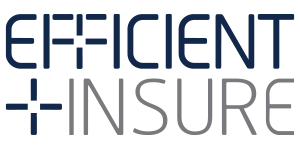
Courtesy of Auto Trade and Guardrisk, we’re pleased to share a practical guide that helps individuals and businesses understand how to set the right sums insured for their insurance policies. This guide outlines key considerations for fire and material damage, business interruption, and liability cover - making it easier to review your current cover or prepare for renewal.
Underinsurance can lead to devastating financial consequences, especially in the event of a major loss. This resource highlights common gaps and provides practical suggestions to ensure your insurance truly reflects the value of your property, stock, or operations.
Whether you’re reviewing your building insurance, checking your business interruption cover, or assessing liability limits, this guide can serve as a useful checklist and conversation starter with your broker or insurer.
POTENTIAL THINGS TO CONSIDER:
“Food for thought” when one is deciding on sums insured (SI)
FIRE / MATERIAL DAMAGE SECTIONS
ITEM OF COVER |
POTENTIAL THINGS TO CONSIDER – DECIDING ON THE SUM INSURED (SI) |
|
|---|---|---|
1 |
Buildings (Fire Section) | Obtaining a quote from a due building contractor (to reinstate the property) along with the property concerned is perhaps one way to begin to review the sum insured (with due consideration of the relevant policy extensions). |
2 |
Plant, machinery, fixtures and fittings (Fire Section) | The insureds inventory (recently updated) of each and every item with replacement values of each item will perhaps assist. |
3 |
Non-vehicle stock and materials in trade (Fire Section) | The insureds stock listing (recently updated) should perhaps provide guidance here, with provision being made for peaks in stock holding. |
4 |
Vehicle stock (Fire Section) | The insureds vehicle stock listing (recently updated and which ought to include own vehicles) should perhaps provide guidance here, with provision being made for peaks in stock holding. |
5 |
Customers vehicles (for which the insured is responsible) (Fire Section) | Average number of customers vehicles on the insured’s premises day or night multiply the average vehicle value e.g., 20 vehicles X R250,000 = R5,000,000. Provision should perhaps be made for where the average number of vehicles or average vehicle value is exceeded e.g., cater for 5 additional vehicles @ R1,000,000, viz. R5,000,000, therefore total R10,000,000. |
6 |
Electronic equipment section (where cover is on a blanket basis) | The insureds inventory of each electronic item covered (recently updated) with replacement values of each item will perhaps assist. |
*Disclaimer: This document is not intended to be a definitive guide or list but to assist brokers and policyholders to have sufficient cover in place should an insured event take place. Each policyholder is unique and they know their business best. As always, the policyholder should be encouraged to make the most complete disclosure that they can and convey their needs fully.
BUSINESS INTERRUPTION SECTION
ITEM OF COVER |
POTENTIAL THINGS TO CONSIDER – DECIDING ON THE SUM INSURED (SI) |
|
|---|---|---|
1 |
Gross profit (GP) difference basis sum insured | It’s a good idea to review the definition of GP when reviewing the sum insured for the GP, reduced to a formula below for ease of reference: GP = (turnover + Closing Stock) – (Opening Stock + uninsured costs {as specified in the schedule}). |
2 |
Sum insured is for at least a period of 12 months (even if the chosen Indemnity Period (IP) is shorter) | To ward off average (as the average calculation utilises annual turnover), the sum insured must be for a period greater than or equal to 12 months (greater than where indemnity period exceeds 12 months e.g. 24 months). It should be noted that annual turnover is effectively the expected turnover in the 12 months commencing on the date of loss. |
3 |
Indemnity period (IP) | It is prudent to ensure the indemnity period chosen by the insured e.g. 24 months provides for various considerations e.g.
|
4 |
Adjustment to sum insured for trends | It is key for the insured to adjust the sum insured for trends (e.g. 15% growth trend year on year) after inter alia due consideration / comparison of the last and previous years financials, as well as for variations and other circumstances affecting the business. |
5 |
Sum insured adjustment if claims occur in last day / Day 365 of insurance period | The Sum Insured ought to be adequate to cover the GP for the 12 months following the Damage (or longer if the IP exceeds 12 months) and therefore, in setting the Bi Sum Insured, the Insured should always be projecting 24 months ahead from the first day of the Policy year in case the incident were to occur on the last day of the Policy year. |
6 |
VAT | The insured must ensure the sums insured includes VAT, as the documents e.g. financials used to arrive at the sum insured may not include VAT. |
PUBLIC LIABILITY SECTION AND OTHERS CONTAINING LIABILITY COVER
POTENTIAL THINGS TO CONSIDER – DECIDING ON THE S1
As it may not be possible to accurately predict the total costs of say being sued including yet not limited to legal costs, it always is a good idea to consider the highest sum insured the company can provide you as the sum insured.
If you have questions about your current cover or would like help reviewing your sums insured, feel free to get in touch with our team. We're here to help you stay protected, prepared and adequately insured.

